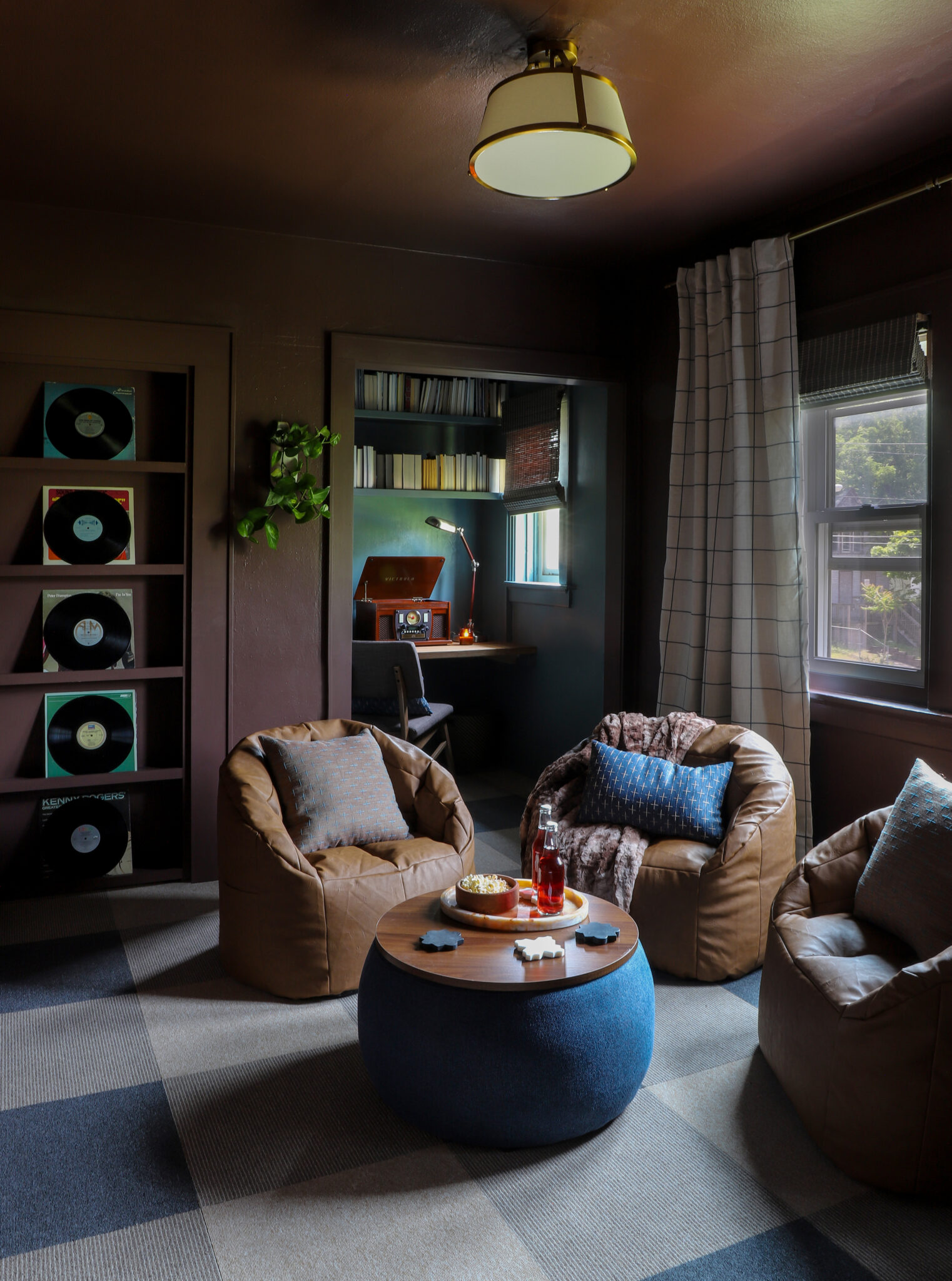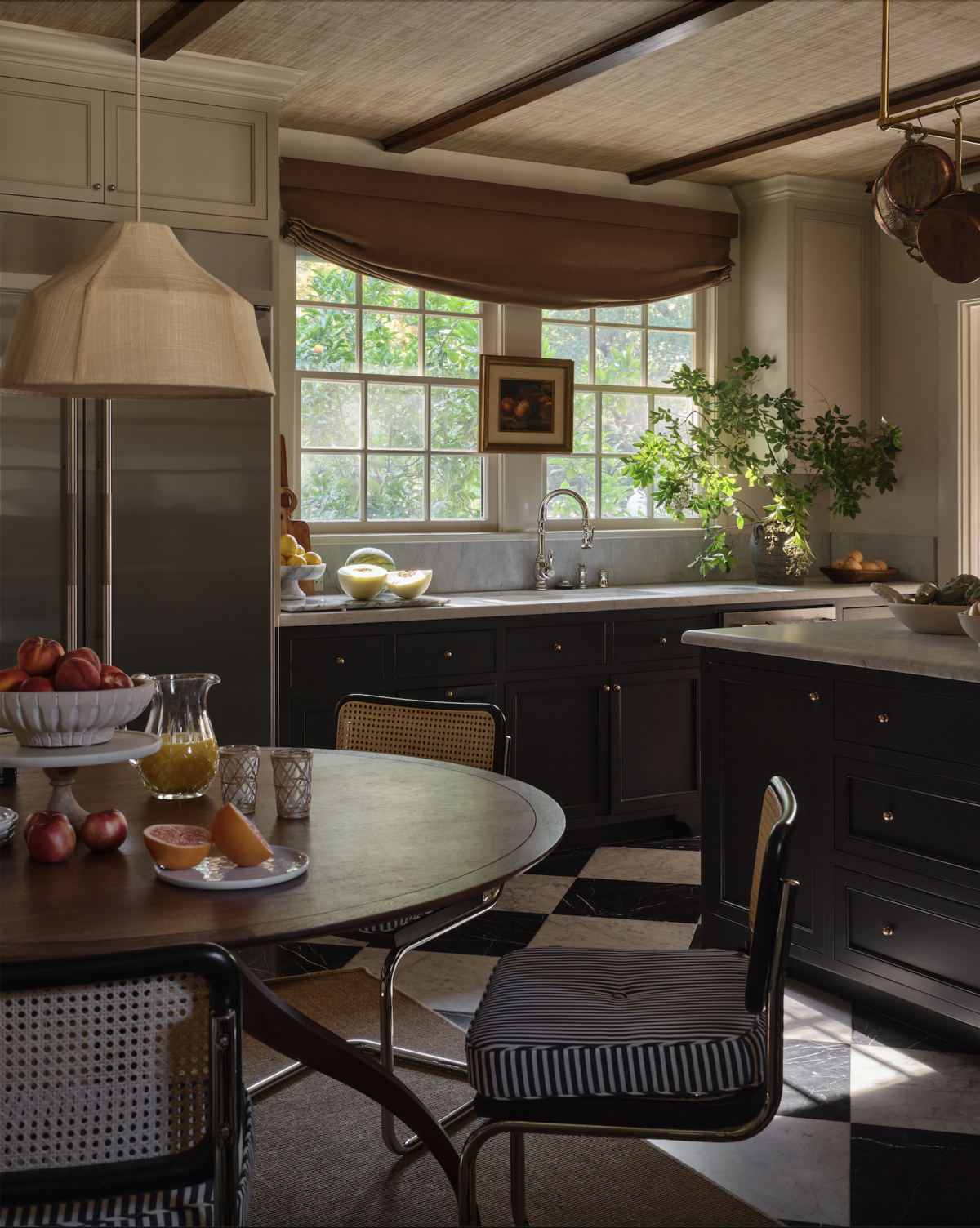Dear danica,
I have orange peel textured walls all throughout my house. We just moved in recently and want to paint but the texture bothers me. When picking paint colors, do you have any advice on how to deal with them?
– Sarah
I love this question because SO many homes have textured walls and SO many people dislike them. Most old homes have plaster and lath which was often troweled to a relatively smooth finish. But somewhere around the 60’s textured walls became much more common. Textured walls seem to be somewhat of a geographical characteristic with Texas and Florida homes topping the list. For some, it’s a decorative addition. But in most cases, it’s a way of hiding drywall imperfections and masking the seams between drywall sheets.
There are a few options for hiding or disguising texture on walls, and the room below by I SPY DIY is a preview of what I’ll suggest.

Option 1: Use Flat Paint On Textured Walls To Reduce The Reflection
The lower the paint sheen, the less it will reflect texture and imperfections. Flat paint is best for reducing reflection and hiding texture or flaws on walls and ceilings. The down side to flat paint however is that it’s difficult to clean. Any smudge, mud, or dirty fingerprints stay. That being said, Sherwin Williams sells flat paint that has excellent washability. Klappenberger & Son tested 5 Sherwin William flat paints and Emerald & Duration were the clear winners for best cleanability.
Option 2: Use Natural Light To Choose Paint Colors
In some cases, you may find that natural light is playing a role in how obvious the orange peel is. In a room where you have a lot of natural light coming from multiple walls (i.e. windows on two or more walls) you may come to realize that lighter colors disguise the texture more. The reason being that strong natural light coming from multiple directions will wash out texture on a light colored wall.
On the flip side, you may find that rooms with little to no natural light do better with mid tone or dark paint colors. Rooms that have windows on just one wall, for example, only have one light source coming from one direction. Therefore, when the light hits textured walls, it creates highlights and shadows. Shadows are especially obvious on lighter colors, but shadows virtually disappear on dark colors.
There will always be instances where natural light washes out one wall while creating shadows on another wall. In this instance, pick a paint color based off the wall that’s most prevalent in the room. (Often the wall you see first when you enter the room, the biggest wall, or the wall that shows texture the most.)
Option 3: Use Wallpaper To Cover Textured Walls
Wallpaper with pattern or texture will hide the orange peel walls underneath. It’s a relatively easy solution that will do a better job of disguising texture than paint. Look for wallpaper that is applied with paste. Peel and stick wallpaper doesn’t hold well on textured walls.
Option 4: Skim Coat The Walls
If you truly don’t like the texture of the walls and the tricks above are cutting it, skim coating the walls with plaster will hide the texture altogether. Of course, it’s a labor intension project, especially if it’s done in your entire house, and it requires some finesse to get a smooth finish. But, if you’re desperate to get rid of the texture, this is your best route.
Where behind the scenes, exclusive advice, and candid conversations are sent straight to your inbox every week.


